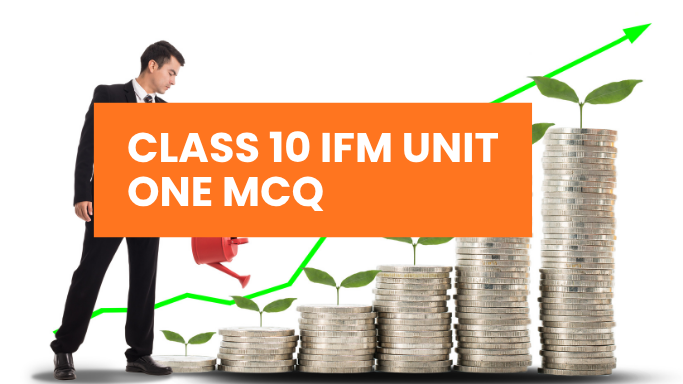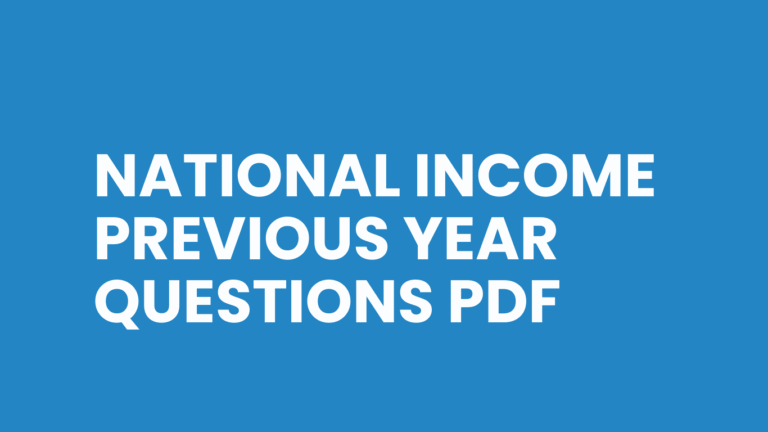India Location Class 11 Geography MCQ | Class 11 Geography Chapter 1 important MCQs
This Article will provide you with the India Location Class 11 Geography MCQ. These are very helpful for your exams. Use this MCQ, which I have provided based on my own class 11 notes. This can help you practice your chapter. All these MCQs are based on my own exam experience, and I have scored an A+ grade in my exams with these MCQs. There, you will get a total of 50 MCQs from the India Location Chapter. Use them and Excel in your exams. You can also get the India Location Class 11 Geography MCQ explanation on our YouTube channel.

India Location Class 11 Geography MCQ
Here are the top 50 India Location Class 11 Geography MCQ:
1. What is the latitudinal extent of India’s mainland?
a) 6°45’N to 37°6’N
b) 8°4’N to 37°6’N
c) Kashmir to Kanniyakumari
d) 8°4’N to 35°6’N
Answer: c) Kashmir to Kanniyakumari
2. What is the longitudinal extent of India?
a) About 25 degrees
b) About 30 degrees
c) About 35 degrees
d) About 40 degrees
Answer: b) About 30 degrees
3. India’s territorial limit extends into the sea up to how many nautical miles?
a) 10 nautical miles
b) 12 nautical miles
c) 15 nautical miles
d) 20 nautical miles
Answer: b) 12 nautical miles
4. What is the distance from north to south extremity of India?
a) 2,933 km
b) 3,214 km
c) 3,500 km
d) 2,800 km
Answer: b) 3,214 km
5. What is the distance from east to west extremity of India?
a) 2,933 km
b) 3,214 km
c) 3,100 km
d) 2,850 km
Answer: a) 2,933 km
6. Which meridian is selected as India’s standard meridian?
a) 75°30’E
b) 82°30’E
c) 85°30’E
d) 90°30’E
Answer: b) 82°30’E
7. Indian Standard Time is ahead of Greenwich Mean Time by:
a) 4 hours 30 minutes
b) 5 hours
c) 5 hours 30 minutes
d) 6 hours
Answer: c) 5 hours 30 minutes
8. What is India’s area in million square kilometers?
a) 2.28 million sq km
b) 3.28 million sq km
c) 4.28 million sq km
d) 3.50 million sq km
Answer: b) 3.28 million sq km
9. India accounts for what percentage of the world’s land surface area?
a) 2.2%
b) 2.4%
c) 2.6%
d) 2.8%
Answer: b) 2.4%
10. India ranks which position among the largest countries in the world?
a) Fifth
b) Sixth
c) Seventh
d) Eighth
Answer: c) Seventh
11. The coastline of India’s mainland is:
a) 6,100 km
b) 7,517 km
c) 6,500 km
d) 7,200 km
Answer: a) 6,100 km
12. The total geographical coastline including island groups is:
a) 6,100 km
b) 7,517 km
c) 8,000 km
d) 7,200 km
Answer: b) 7,517 km
13. Which strait separates India from Sri Lanka?
a) Palk Strait only
b) Gulf of Mannar only
c) Both Palk Strait and Gulf of Mannar
d) Cook Strait
Answer: c) Both Palk Strait and Gulf of Mannar
14. The Andaman and Nicobar Islands are located in:
a) Arabian Sea
b) Bay of Bengal
c) Indian Ocean
d) Gulf of Bengal
Answer: b) Bay of Bengal
15. Lakshadweep islands are located in:
a) Arabian Sea
b) Bay of Bengal
c) Indian Ocean
d) Gulf of Mannar
Answer: a) Arabian Sea
16. The southern boundary of India extends up to which latitude in the Bay of Bengal?
a) 6°30’N
b) 6°45’N
c) 7°N
d) 6°15’N
Answer: b) 6°45’N
17. The time difference between the easternmost and westernmost parts of India is nearly:
a) 1 hour
b) 1.5 hours
c) 2 hours
d) 2.5 hours
Answer: c) 2 hours
18. Countries generally select standard meridians in multiples of:
a) 7°
b) 7°30′
c) 8°
d) 15°
Answer: b) 7°30′
19. How many time zones does the USA have?
a) Five
b) Six
c) Seven
d) Eight
Answer: c) Seven
20. One nautical mile is approximately equal to:
a) 1.6 km
b) 1.8 km
c) 2.0 km
d) 1.5 km
Answer: b) 1.8 km
21. One statute mile is approximately equal to:
a) 1.584 km
b) 1.852 km
c) 1.6 km
d) 1.7 km
Answer: a) 1.584 km
22. The southern part of India lies within:
a) Subtropical zone
b) Tropics
c) Temperate zone
d) Polar zone
Answer: b) Tropics
23. The northern part of India lies in:
a) Tropical zone
b) Subtropical or warm temperate zone
c) Cold temperate zone
d) Arctic zone
Answer: b) Subtropical or warm temperate zone
24. The Indian subcontinent includes which countries?
a) Only India
b) India, Pakistan, Nepal
c) Pakistan, Nepal, Bhutan, Bangladesh, and India
d) India, Pakistan, Sri Lanka
Answer: c) Pakistan, Nepal, Bhutan, Bangladesh, and India
25. Which mountain pass is NOT mentioned in the chapter?
a) Khyber Pass
b) Bolan Pass
c) Rohtang Pass
d) Nathula Pass
Answer: c) Rohtang Pass
26. The Shipkila pass is mentioned as one of the few mountain passes that:
a) Connect India to China
b) Allow crossing the Himalayan barrier
c) Lead to Pakistan
d) Connect northeast India
Answer: b) Allow crossing the Himalayan barrier
27. India is located in which part of the Asian continent?
a) South-eastern
b) South-central
c) South-western
d) Central
Answer: b) South-central
28. The two arms of the Indian Ocean extending into the Indian subcontinent are:
a) Arabian Sea and Red Sea
b) Bay of Bengal and Arabian Sea
c) Bay of Bengal and Persian Gulf
d) Arabian Sea and Gulf of Oman
Answer: b) Bay of Bengal and Arabian Sea
29. Which island countries are India’s neighbors in the Indian Ocean?
a) Sri Lanka and Mauritius
b) Maldives and Mauritius
c) Sri Lanka and Maldives
d) Sri Lanka and Seychelles
Answer: c) Sri Lanka and Maldives
30. The Tropic of Cancer passes through India at approximately:
a) 21°30’N
b) 23°30’N
c) 24°N
d) 22°30’N
Answer: b) 23°30’N
31. The easternmost state of India mentioned in the chapter is:
a) Assam
b) Manipur
c) Arunachal Pradesh
d) Mizoram
Answer: c) Arunachal Pradesh
32. The westernmost state of India mentioned is:
a) Rajasthan
b) Gujarat
c) Maharashtra
d) Punjab
Answer: b) Gujarat
33. The northernmost region mentioned is:
a) Himachal Pradesh
b) Kashmir
c) Ladakh
d) Uttarakhand
Answer: b) Kashmir
34. The southernmost point mentioned is:
a) Chennai
b) Thiruvananthapuram
c) Kanniyakumari
d) Rameswaram
Answer: c) Kanniyakumari
35. School Bhuvan NCERT is an initiative of:
a) NCERT only
b) ISRO only
c) Bhuvan-NRSC/ISRO based on NCERT syllabus
d) Ministry of Education
Answer: c) Bhuvan-NRSC/ISRO based on NCERT syllabus
36. The Himalayas have acted as a:
a) Trade route
b) Cultural bridge
c) Formidable physical barrier
d) Migration path
Answer: c) Formidable physical barrier
37. The Purvachal hills are located in India’s:
a) Northwest
b) Northeast
c) Southwest
d) Southeast
Answer: b) Northeast
38. The Hindukush and Sulaiman ranges are located in India’s:
a) Northeast
b) Northwest
c) Southeast
d) Southwest
Answer: b) Northwest
39. The vast sandy expanse mentioned in the chapter refers to:
a) Thar Desert
b) Marusthali
c) Great Indian Desert
d) Kutch Desert
Answer: b) Marusthali
40. The difference between east-west distance being shorter than north-south distance despite similar longitudinal and latitudinal extent is because:
a) Earth is flat
b) Distance between longitudes decreases towards poles
c) Distance between latitudes increases towards poles
d) Measurement error
Answer: b) Distance between longitudes decreases towards poles
41. The distance between two latitudes:
a) Increases towards poles
b) Decreases towards poles
c) Remains the same everywhere
d) Varies randomly
Answer: c) Remains the same everywhere
42. When the sun rises in northeastern states, it is about how many hours earlier compared to Jaisalmer?
a) 1 hour
b) 2 hours
c) 3 hours
d) 1.5 hours
Answer: b) 2 hours
43. The concept of Indian Standard Time ensures that:
a) All states have different times
b) Eastern states have earlier time
c) All parts of India show the same time
d) Western states have later time
Answer: c) All parts of India show the same time
44. The chapter mentions which of these as major rivers of India?
a) Yamuna, Narmada, Tapti
b) Ganga, Brahmaputra, Mahanadi, Krishna, Godavari, Kaveri
c) Indus, Chenab, Ravi
d) Ganga, Yamuna, Saraswati
Answer: b) Ganga, Brahmaputra, Mahanadi, Krishna, Godavari, Kaveri
45. The green forested hills mentioned in the chapter are found in:
a) Northwest and southwest India
b) Northeast and south India
c) Central and western India
d) Northern and eastern India
Answer: b) Northeast and south India
46. The maritime location of Peninsular India has provided:
a) Natural barriers
b) Links through sea and air routes
c) Isolation from neighbors
d) Desert climate
Answer: b) Links through sea and air routes
47. The physical diversity of India is attributed to:
a) Small size
b) Location near equator
c) Large size
d) Island nature
Answer: c) Large size
48. India’s peninsular part extends towards:
a) Bay of Bengal
b) Arabian Sea
c) Indian Ocean
d) Pacific Ocean
Answer: c) Indian Ocean
49. The varied resources in India are a result of:
a) Foreign investment
b) Physical diversity of the land
c) Government policies
d) International trade
Answer: b) Physical diversity of the land
50. The chapter suggests that to understand India’s location, one should examine:
a) Political map only
b) Physical map only
c) Both political and physical maps
d) Satellite images only
Answer: c) Both political and physical maps
ALSO CHECK OUT – Class 11 Geography Chapter 3 MCQ | Interior of The Earth Important MCQ
Class 11 Geography Chapter 3 Notes | Interior of the Earth Important topics and Notes






